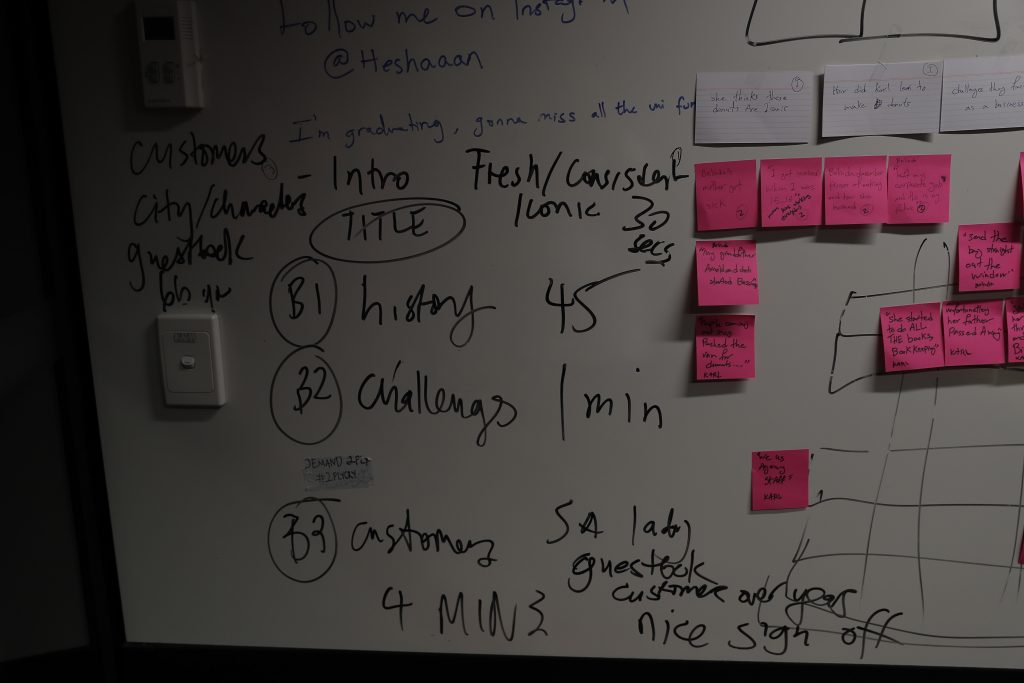The opportunity to work within a group while collaborating with an external client and getting guidance from a professional documentarian has been beneficial to me. Working within a team I developed a greater understanding in knowing how a team can work together to get the best outcome. Knowing how each member’s skills, strengths and capabilities can be used in dynamic ways. Understanding my capabilities and my group’s capabilities was crucial in determining how we were to approach the short documentary project. Effective communication was going to determine how efficient we work as a team. I felt I benefitted by fulfilling my obligations to the group and having a desire to learn from the process. I had some prior experience and skills in production and I tried to apply it while also looking to improve.
Working in a group it is important for people to step up because the possibilities will increase dramatically. Not everyone in the group had the desire to step up and go beyond the basics, but those who did really benefitted. Camilla was proactive with thoughts, ideas and execution. She was a good communicator, driven and team oriented. She got the group going by putting together our preparation documents that had us organised early. I worked well with her during the production and editing process. While I did much of the filming, she would arrange our interviews and provide direction as well identify ways to improve edit.
I was most frustrated, when it was left to me to bring all the equipment we were going to use from the loan office to QVM due to my team arriving late. I feel I should have left behind some of the equipment that wasn’t crucial.
Because the American Doughnut Kitchen is a family business established and serving doughnuts since the 1950s, our focus was to tell a generational story, but also focus on what it’s all about…the doughnuts. Food porn is what we were after. There were multiple stages in the making of the doughnuts and this provided some very appropriate visuals.
A challenging part of the production process was forming a relationship with our interviewees. Due to the availability of the interviewees, we didn’t get the opportunity to meet with them prior to the interview. Unfortunately this meant we weren’t able to form a level of trust and get knowledge on their personalities. Had we understood them better, we could have adjusted the way we interviewed them. We weren’t fully prepared in this aspect. It was, however, a lesson in dealing with people, especially on a business/corporate level. I now feel more comfortable dealing with a client on a corporate level. I can take aspects of what we did and didn’t do.
What was a major benefit for us was editing with the other groups in the edit suites. I learned a lot about editing throughout this process. It felt like a professional environment and we would get helpful feedback from our tutor, Rohan. After we come back to the editing suites after filming, he was able to tell us what worked and didn’t work. We also got feedback from professional editor, Cindy, which helped us fine tune our film.
From the first few weeks of the studio, when we met in the class room, the exercises we did seemed very practical. This made me really think what was needed and what to look out for when planning a documentary. From observing environments to people and listening. Practising these exercises can only improve future productions. I am by no means comfortable interviewing people, but learning the techniques in how to approach the task made me more comfortable during the interview process.
Looking to apply the editing techniques of Rohan, our group made an effort to use post it notes to organise our footage. I don’t feel like we used this to it’s full affect as we resulted in looking through the footage we were after.
In the treatment stage, we had goals to have our documentary be 5-6 minutes long, but as we reviewed our footage, there wasn’t enough to keep the story engaging. We had originally set out to do a story based around legacy, but since we didn’t get enough from the interview to tell that story, we had to re-structure it. Based on the footage we had, Rohan suggested we structure it with: 1. Introduction 2. History 3. Challenges 4. Customers. This helped a lot as it allowed us to focus on this structure and refine it from there.
I am very satisfied with what our group was able to achieve. Belinda and Karl are keen to see what we have come up with, I think they will love it and most likely share it on their media platforms. I have gained valuable knowledge and experience that will be beneficial in a professional environment. I am sure this experience will help me in my future endeavours. I will include the video as part of my portfolio.



